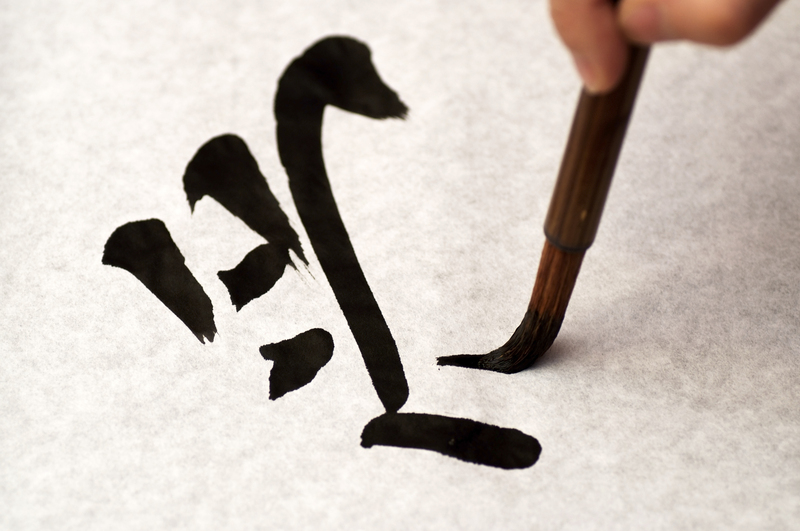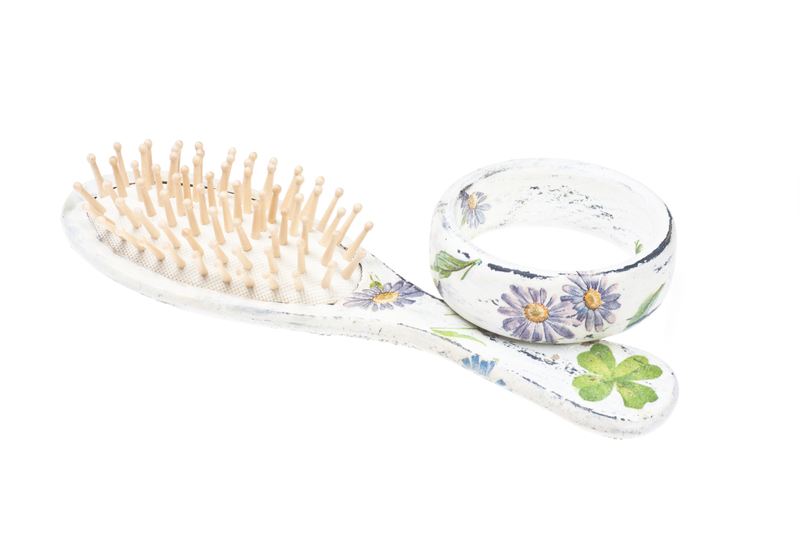What to Do With Old Pots and Pans: Eco-Conscious Disposal Solutions
We all accumulate cookware over time--from scratched-up frying pans to dented saucepans, at some point, every pot or pan reaches the end of its culinary journey. But what happens then? Tossing old pots and pans straight into the trash contributes to overflowing landfills and wastes valuable materials. Luckily, there are eco-friendly ways to dispose of, repurpose, or recycle cookware that not only benefit the environment but sometimes also your local community. In this comprehensive guide, we'll explore what to do with old pots and pans through a variety of sustainable disposal solutions.
The Environmental Impact of Discarding Cookware
Many people overlook the environmental footprint of discarded kitchenware. Old pots and pans are often made of non-biodegradable materials like stainless steel, aluminum, copper, or non-stick coatings. Throwing them in the bin means these materials can languish in landfills for centuries--a concerning outcome--especially when you consider that millions of people update their cookware every year.
- Non-biodegradable Waste: Stainless steel and non-stick pans don't break down easily, taking up permanent space in landfills.
- Resource Depletion: Metals used in cookware require significant energy and resources to mine and process.
- Pollution: Some pots and pans contain coatings or chemicals that can leach harmful substances into the soil and water systems.
Thus, choosing eco-conscious disposal solutions for old pots and pans is essential. The goal is to minimize waste, conserve resources, and reduce environmental impact. So what options do you have?

1. Check If Cookware is Still Usable
Evaluate Condition Before Disposing
Before deciding to get rid of any cookware, begin by assessing its current condition. Sometimes, old pots or pans can be restored or reused, extending their lifecycle and reducing unnecessary waste.
- Minor Issues: If pans are just discolored or have minor scratches, they may still be perfectly fine for cooking or for use in outdoor grilling.
- Damaged Handles or Lids: Handles and lids can often be repaired or replaced, breathing new life into your cookware.
- Worn Non-Stick Coatings: If the non-stick finish is flaking or significantly damaged, the pan is no longer safe for food preparation, but could still have alternative uses.
Sometimes a good cleaning, a handle replacement, or a non-stick restoration can delay disposal. But if your pots and pans are truly beyond repair or safe use, it's time for eco-friendly disposal options.
2. Recycle Old Pots and Pans Responsibly
The Best Way to Dispose of Metal Cookware
Can you recycle pots and pans? In most cases, yes--especially if they're made entirely from metals such as stainless steel, aluminum, or copper. Even those with minor plastic or rubber elements (like handles) can often be recycled if the non-metal parts are removed first.
- Scrap Metal Recycling: Take your cookware to a local scrap metal recycling facility. These centers process metal goods for reuse, keeping resources in circulation.
- Municipal Recycling Programs: Many cities accept cookware for recycling, but check local rules first--some require you to drop off at a special location or remove handles and lids.
- Specialty Recycling Services: For pots and pans with non-stick coatings (like Teflon), research eco-recycling programs; not all recyclers accept PTFE-coated cookware.
Tip: Confirm with your municipal waste department if curbside pick-up includes cookware, or find a certified scrap metal collection location.
3. Donate Usable Cookware
Give Old Pots and Pans a Second Life
Just because you've upgraded your kitchen doesn't mean your old pots and pans aren't useful to someone else. Donating is a fantastic way to ensure your pots and pans remain productive while benefiting the community.
- Thrift Stores: Non-profit charity shops like Goodwill or Salvation Army frequently accept cookware in good condition.
- Homeless Shelters and Soup Kitchens: Community kitchens often need functional cookware for preparing meals.
- College Students and New Families: Many individuals setting up their first homes appreciate free or affordable secondhand kitchenware.
Ensure items are clean, safe, and still usable before donating.
4. Upcycle and Repurpose Old Pots and Pans
For non-recyclable or highly worn cookware, consider the creative route: upcycling pots and pans into something entirely new. This method breathes new life into old items and prevents landfill waste.
Creative DIY Projects for Old Cookware
- Planters: Drill a few drainage holes in the bottom and fill with soil for unique container gardening.
- Tool Storage: Hang pans on your workshop wall as holders for screws, nails, or small tools.
- Pendant Lights: With some wiring and creativity, transform large aluminum pots into stylish industrial lamp shades.
- Decorative Displays: Paint and embellish old pots to make rustic kitchen wall art.
- Bird Feeders: Turn a small pan or pot upside-down on a pole or hang it as a quirky bird feeder.
Upcycling is limited only by your imagination. *Search online for more DIY inspiration*, and you'll be surprised by how many ways you can reuse old cooking vessels around your house or garden.
5. Sell or Trade Old Pots and Pans
If your cookware is still in decent condition but simply no longer suits your needs, selling or trading is another eco-conscious disposal solution. This extends the item's life and helps someone else avoid buying new.
How to Sell Used Cookware
- Online Marketplaces: Post your items for sale on websites like Craigslist, Facebook Marketplace, eBay, or OfferUp.
- Local Zero-Waste Groups: Join local social media groups focused on swapping or sharing used goods.
- Garage Sales: Include your gently used pots and pans in a yard sale for neighbors to snag a bargain.
Pro Tip: Thoroughly clean cookware before selling, and include photos and honest descriptions to attract buyers.
6. Return to Manufacturer Take-Back Programs
Some cookware brands have begun implementing environmentally responsible initiatives, including take-back or responsible disposal programs.
- Brand-Specific Recycling: Companies such as Calphalon, TerraCycle, and others sometimes accept old cookware for recycling if you return it via their program.
- Discounts on New Purchases: Occasionally, retailers offer trade-in programs with discounts on new items in exchange for your old cookware.
Check brand websites or contact customer service to find out if your pots and pans' manufacturer offers a sustainability program. This is a hassle-free way to ensure your old pans are disposed of in an environmentally friendly way.
7. Proper Disposal for Non-Stick and Coated Cookware
What to Do With Pots and Pans With Damaged Coating?
Non-stick cookware presents special disposal challenges. Pans with Teflon or other PTFE coatings may not be accepted at some scrap yards due to the chemicals involved.
- Local Hazardous Waste Programs: Some communities collect non-stick pans as household hazardous waste.
- Check with Scrap Yards: Some recyclers can handle non-stick pans, especially if you remove any plastic or rubber parts first.
- Mail-in Recycling: Companies like TerraCycle periodically run cookware recycling programs nationwide.
Always confirm your community's regulations and avoid putting non-stick pans in your curbside recycling unless specifically allowed.
8. Compost-Friendly Cookware?
While the majority of old pots and pans are made from non-compostable materials, there's an exception to every rule. Rare ceramic or clay cookware can be broken into pieces and used as drainage material in plant pots or as a base layer in outdoor compost heaps (if the pieces are small and unglazed).
Other Ways to Use Fragments
- Garden Mulch: Broken ceramic pieces can help retain moisture in garden beds.
- Art Projects: Decorate mosaics or stepping stones with colorful pieces from shattered cookware.
Just ensure all remains are lead-free and unglazed before repurposing them in the garden.
9. Organize a Community Collection or Swap Event
If you're not the only one cleaning out your kitchen, organizing a cookware collection drive or swap event fosters sustainability within your community. Encourage neighbors to bring their unused or unwanted pots and pans for trading, donation, or group recycling. Schools and local organizations may also partner with recycling companies to collect large batches for proper disposal.
10. What About Antique or Collectible Cookware?
Old doesn't always mean useless. Some vintage pots and pans, especially cast iron, copper, or unique enamelware, might have resale value as collectibles. Before discarding, research your cookware brand and model or consult an antiques expert.
- Antique Shops: Dealers may purchase or consign valuable vintage cookware.
- Online Collectors Forums: Connect with buyers or enthusiasts for niche brands or rare pieces.

Best Practices for Eco-Conscious Disposal
- Always clean pans before donating, recycling, or selling to prevent odors or contamination.
- Disassemble as much as possible--remove plastic parts, lids, or screws to ensure smooth recycling.
- Sort by material type for bulk recycling; separate stainless steel from aluminum or copper.
- Never burn cookware or dump it in the wild. This can release toxins and damage local ecosystems.
Summary: Choose the Most Sustainable Solution
Addressing the question of what to do with old pots and pans doesn't just help declutter your home--it's a small but significant step toward environmental stewardship. By choosing eco-conscious disposal solutions for old cookware--whether that's recycling, donating, upcycling, or utilizing special take-back programs--you ensure that valuable materials are kept out of landfills & your kitchenware gets a new lease on life.
- Assess whether your pots and pans can still be used or repaired.
- Recycle or donate when possible, and use manufacturer programs for specialty items.
- Get creative with repurposing, or support your community by organizing swaps and collections.
Every eco-friendly action counts. Whether your pots and pans go on to serve someone else, add beauty to your garden, or contribute to metal recycling, you're helping build a more sustainable future--one pan at a time.
